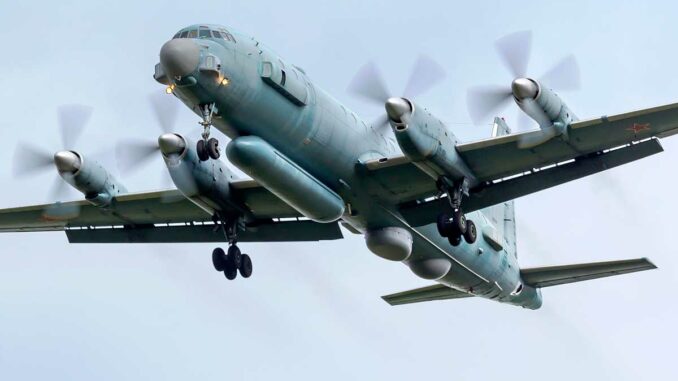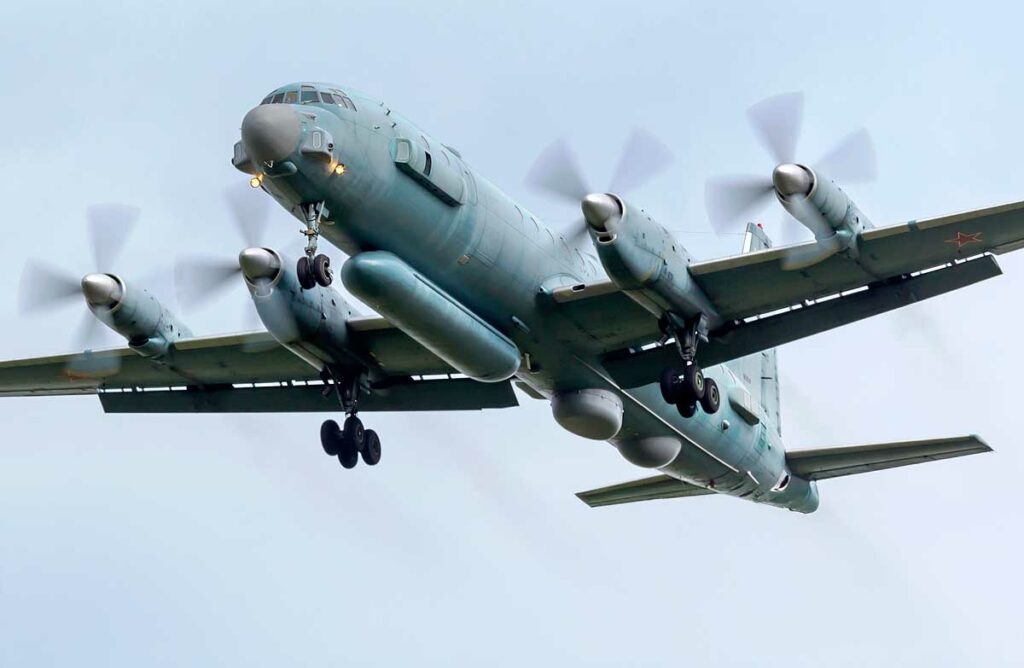
Russian flights into Alaska’s ADIZ continue in 2025, revealing a test of NORAD’s vigilance and illustrating the strategic tension between Moscow and Washington.
Summary
In 2025, NORAD has already intercepted Russian military aircraft in the Alaska ADIZ seven times. The latest incident involved an Il-20M, a Russian electronic intelligence aircraft, escorted and monitored by F-16 Fighting Falcons, KC-135 Stratotankers, and an American E-3 Sentry.
These flights remain in international airspace and do not violate American or Canadian sovereignty. However, they are perceived as tests of responsiveness and strategic signals to Washington.
This practice is part of a context of high tensions since Moscow’s invasion of Ukraine in 2022 and aims to demonstrate both Russia’s capabilities and its determination, while gathering intelligence on North American defenses.
An incident revealing US-Russian tensions
The last flight of the Il-20M Coot-A, a Russian electronic reconnaissance aircraft, required the takeoff of two F-16 fighters, two KC-135 tankers, and a E-3 Sentry advanced detection aircraft from NORAD.
The Russian aircraft remained in international airspace, but the incident highlights the increasing frequency of interceptions: this is the seventh case since January 2025. Three of these interceptions took place in less than a week in August.
Although official statements specify that these activities do not constitute a direct threat, they come at a time when diplomatic relations remain strained, particularly due to the war in Ukraine and Western sanctions.
These flights also have a political dimension: they occurred less than ten days after a meeting in Anchorage between the US president and the Russian president, intended to explore avenues for a ceasefire in Ukraine. Although there is no evidence linking these events, the timing fuels speculation about a signal of intimidation.
Technical insight into the ADIZ and its strategic role
The ADIZ (Air Defense Identification Zone) is not an area of air sovereignty. It is an advanced surveillance perimeter, generally established beyond national borders to allow additional reaction time in the event of a threat.
Aircraft entering the zone are requested to identify themselves. If they fail to do so, the state concerned dispatches fighter jets to intercept them.
Therefore, there is no violation of international law when Russian aircraft fly into the US or Canadian ADIZ, but these incursions are a strategic indicator: they allow Moscow to test NORAD’s response times, map its modes of intervention, and assess North American radar and air coverage.
Historically, more serious incidents occur when aircraft cross national borders. The most famous example remains that of 2015, when Turkey shot down a Russian Su-24 that briefly entered its airspace over Syria.
Moscow’s likely objectives
Russia’s repeated incursions into Alaska’s ADIZ may have several purposes:
- To gather intelligence on NORAD’s radar and detection capabilities.
- To measure the response time and interception procedures of US and Canadian forces.
- Monitor military exercises organized in the region, including US Air Force and US Navy air and naval maneuvers in the Arctic.
- Send a political signal to Washington, particularly during periods of negotiation or tension.
- Strengthen internal cohesion in Russia by highlighting the country’s ability to challenge the United States.
The repetition of these flights underscores Moscow’s willingness to maintain strategic pressure in the Arctic and North Pacific. The systematic use of the Il-20M, an aircraft specialized in electronic intelligence, shows that gathering technical information on North American communications and radars remains a central objective.

NORAD’s response and air defense challenges
NORAD (North American Aerospace Defense Command) is a binational US-Canadian structure created in 1958. It manages an integrated network of ground-based radars, airborne radar stations, satellites, and interceptor fighters to monitor the entire continent.
The organization has confirmed that it has several graduated response options, ranging from interception and escort to possible neutralization fire in the event of a violation of sovereign airspace.
The frequency of interceptions in 2025 reflects the responsiveness and robustness of the North American system, but it also entails high operational costs: mobilizing an F-16 costs around €20,000 to €25,000 per flight hour, plus the costs of refueling and crews.
This operational wear and tear weighs heavily on the budget and requires constant vigilance, particularly in times of tension when aircraft must maintain a rapid take-off capability (QRA – Quick Reaction Alert).
Strategic and diplomatic consequences
These incursions are evidence of the ongoing deterioration in Russian-American relations. They come on top of other sources of friction, such as cyberattacks attributed to Russian groups and disputes over the militarization of the Arctic.
Moscow is sending a twofold message: to demonstrate its ability to operate close to US territory despite sanctions and to remind the US that it still has long-range military capabilities.
For Washington, the challenge is to maintain the credibility of deterrence and prevent these flights from becoming routine, which would weaken the perception of US vigilance.
These incidents also fuel the debate on the modernization of NORAD, which must deal with both conventional reconnaissance aircraft and emerging threats such as hypersonic missiles and long-endurance drones.
A signal about the Arctic and polar routes
The rise in tensions in Alaska’s ADIZ is not limited to bilateral rivalry. It reflects growing strategic competition in the Arctic, a region rich in resources and sea routes made more accessible by global warming.
Russia, which has the longest Arctic coastline, is deploying air bases and defense systems there. The United States is also strengthening its presence in Alaska and upgrading its long-range radars.
Russian incursions can also be interpreted as operations aimed at asserting Moscow’s freedom of action in the Far North and testing the resilience of North American defenses in an increasingly contested area.
The increase in Russian flights in the Alaska ADIZ illustrates a strategic power struggle that is being played out as much in the skies as on the political and diplomatic stage. These operations combine intelligence gathering, psychological pressure, and a show of force.
They highlight the need for the United States and Canada to maintain a credible air defense system that is adapted to a context where strategic competition now extends to the polar regions.
Finally, they underscore that rivalry between major powers is not limited to familiar battlefields but is also expressed in border areas such as the Arctic, where technological superiority and rapid response become determining factors.
War Wings Daily is an independant magazine.